Welcome to Moda Fabrics!
Finding Feed Sacks
Finding Feed Sacks
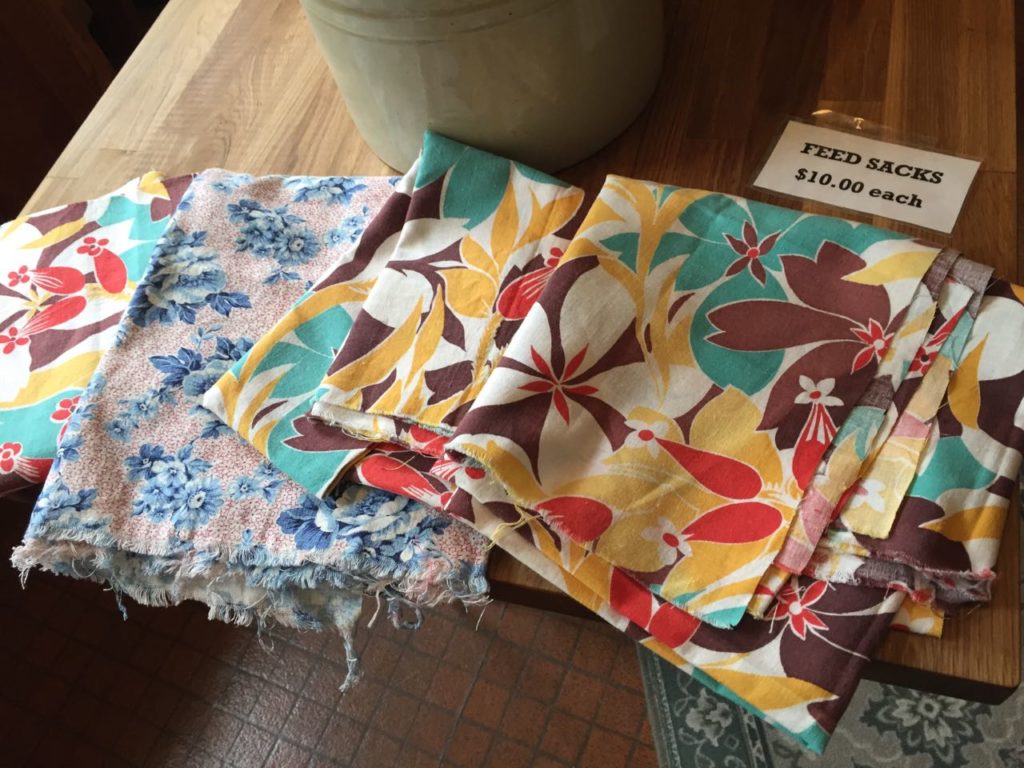 When I first started writing about feed sacks, I had a tiny stack of 12 of them and promised myself I wouldn’t get more.
When I first started writing about feed sacks, I had a tiny stack of 12 of them and promised myself I wouldn’t get more.
As a fellow fabric lover, I’m sure you know how well that went. Though my interest initially was about the culture and economics of the feed sack era, it wasn’t long before I was sucked in by the colors and tens of thousands of different patterns. What was once a tiny pile in my sewing room has grown to fill six shelves. And there’s no end in sight.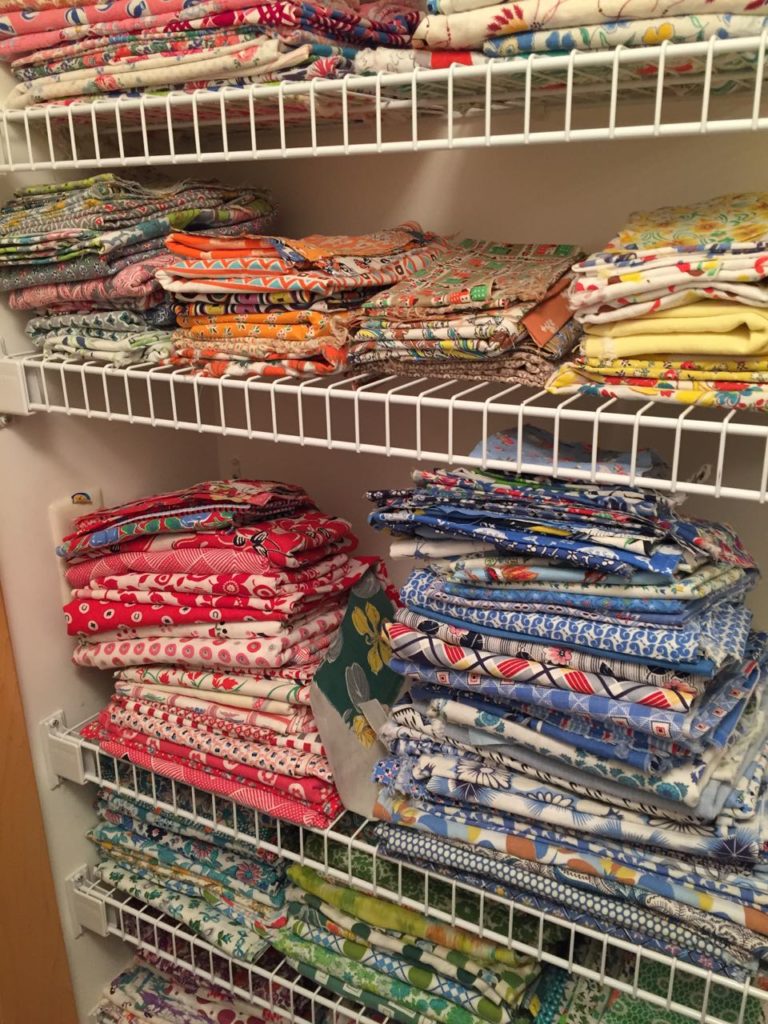
Feed sacks provide visual inspiration, of course, but I’m also moved by the women who made their clothes, curtains, and dishtowels from them. When I feel “too tired” to keep sewing, I think of them raising six kids, growing their own food and canning it, cleaning and cooking without the aid of modern appliances, and still taking the time to add embroidery to their everyday items.
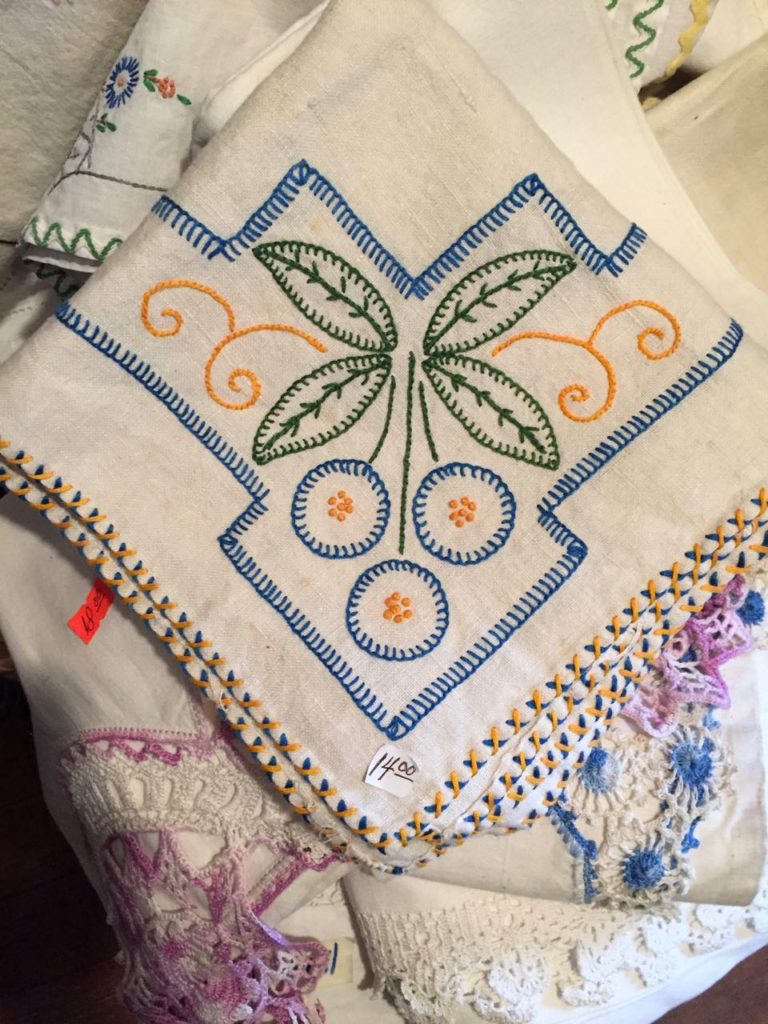 Embroidered towel spotted in an antique store during the search for feed sacks.
Embroidered towel spotted in an antique store during the search for feed sacks.
Loving feed sacks is one thing, but finding them is another. Here are a few hints, if like me, you’re on the hunt.
- Online resources—Ebay is a great source, although you’re bidding against many other feed sack collectors (like me!). Still the range of feed sacks is wide and every now and again you’ll get the one you’re in love with. Prices vary and with some sacks occasionally available for less than $10, and others $40-plus and more. Shipping fees are on top of the price. Etsy is another source for feed sacks—here you’re not bidding against others, but prices tend to reflect that and shipping costs are additional. And I once found feed sacks on Craig’s List, so it might be worth checking. There are also some Facebook groups devoted to feed sacks and feed sack sales.
- Garage sales, estate sales, and other sales. I recently read about a woman who found feed sacks at a sale of old tractors she attended with her son.
- Antique stores, flea markets, vintage shops. This is one of my favorite ways to find sacks. The photos here are of some of the places I visited last week—I found only one, very plain striped sack. But I still enjoy poking around.
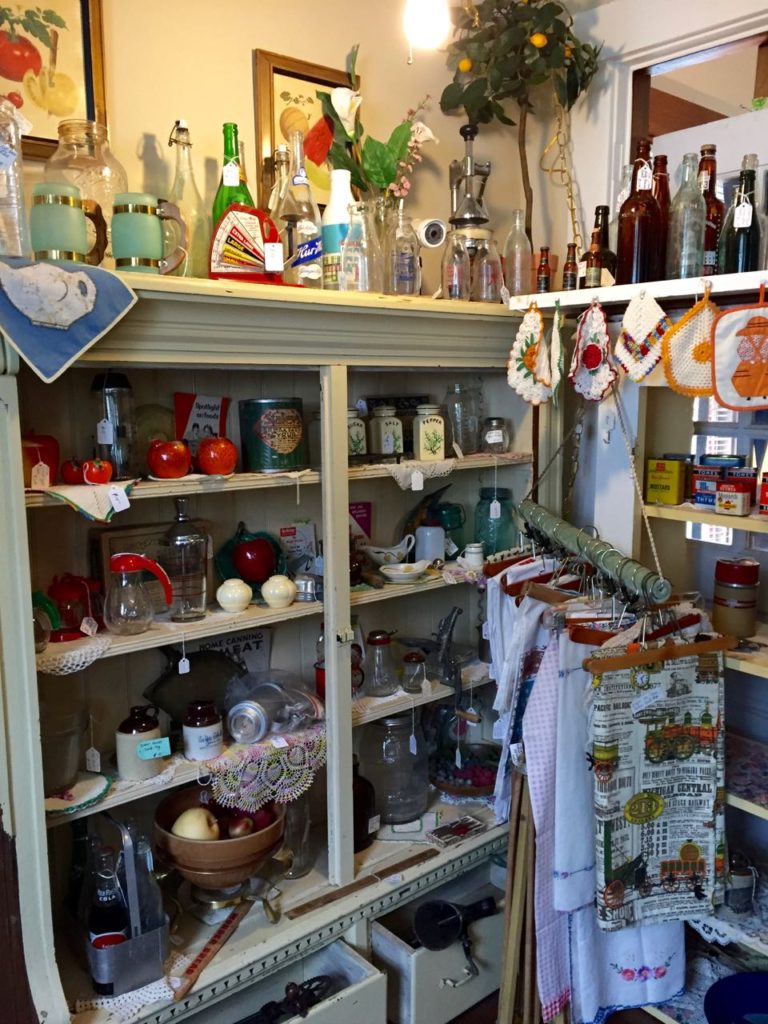 The kitchen of an antique store in an old house in Marion, Iowa.
The kitchen of an antique store in an old house in Marion, Iowa.
How do you know if what you find is really a feed sack? The most obvious way is if it’s still sewn into a sack shape. If it’s not, then the best way to tell is to find the stitching holes around the selvedge edges and across the width of the fabric. You’ll often see the remnants of a curved seam, as well.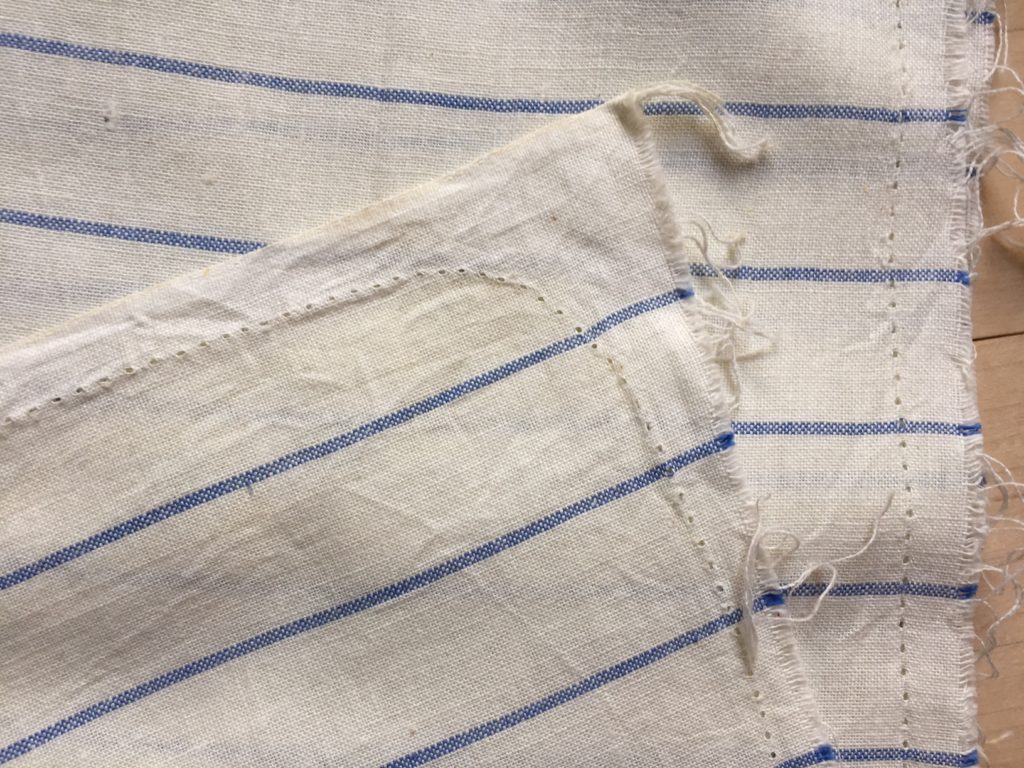
And if you find a quilt that’s labeled “feed sack,” know that many of those are actually 1930s dress prints. Without being able to see the stitching holes it’s challenging to tell whether a quilt contains feed sacks. Once you’ve spent some time familiarizing yourself with prints, you’ll start to recognize them. But with more than 18,000 different patterns, there are sure to be some you haven’t seen before.
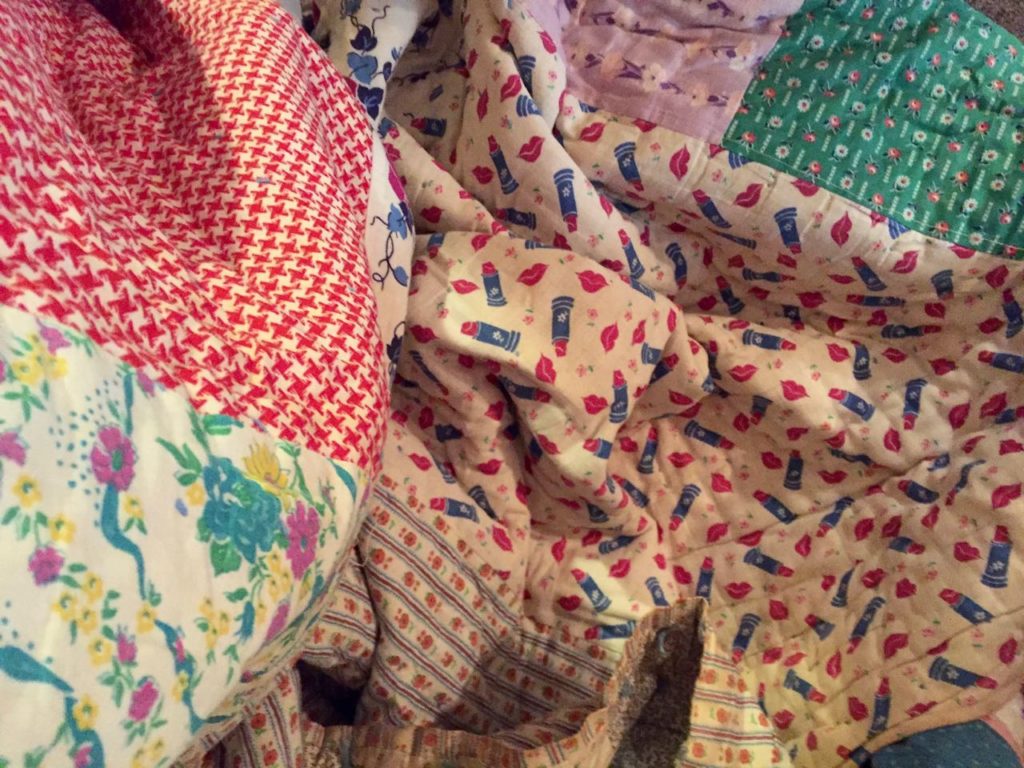 Feed sack fabrics stitched together for a quilt back.
Feed sack fabrics stitched together for a quilt back.
Many feed sack quilts are scrap quilts and it’s common that they’ll combine feed sacks and other fabrics. In an era of “waste not-want not” nothing was wasted and every bit of extra fabric wound up in the scrap bin, to be pulled out and used when the need arose. As a fan of scrap quilts, I love that idea, though I’ve not yet been brave enough to cut into any of my collected sacks.
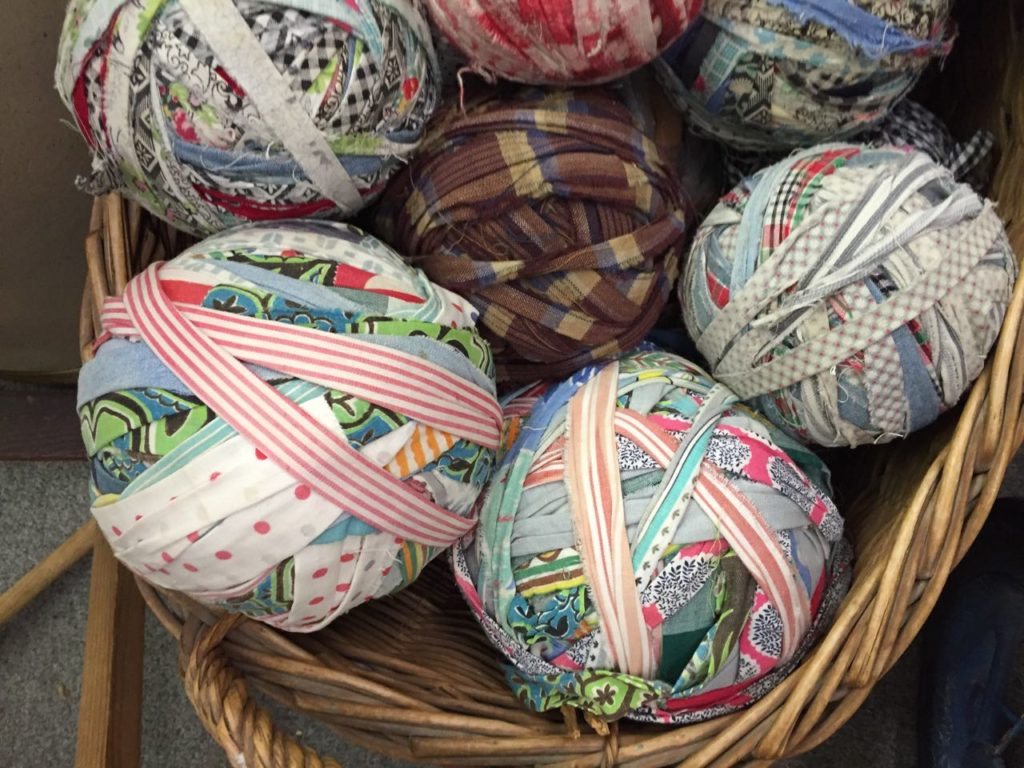 I recognized some feed sacks in these balls of strips, which were likely intended for weaving into rag rugs.
I recognized some feed sacks in these balls of strips, which were likely intended for weaving into rag rugs.
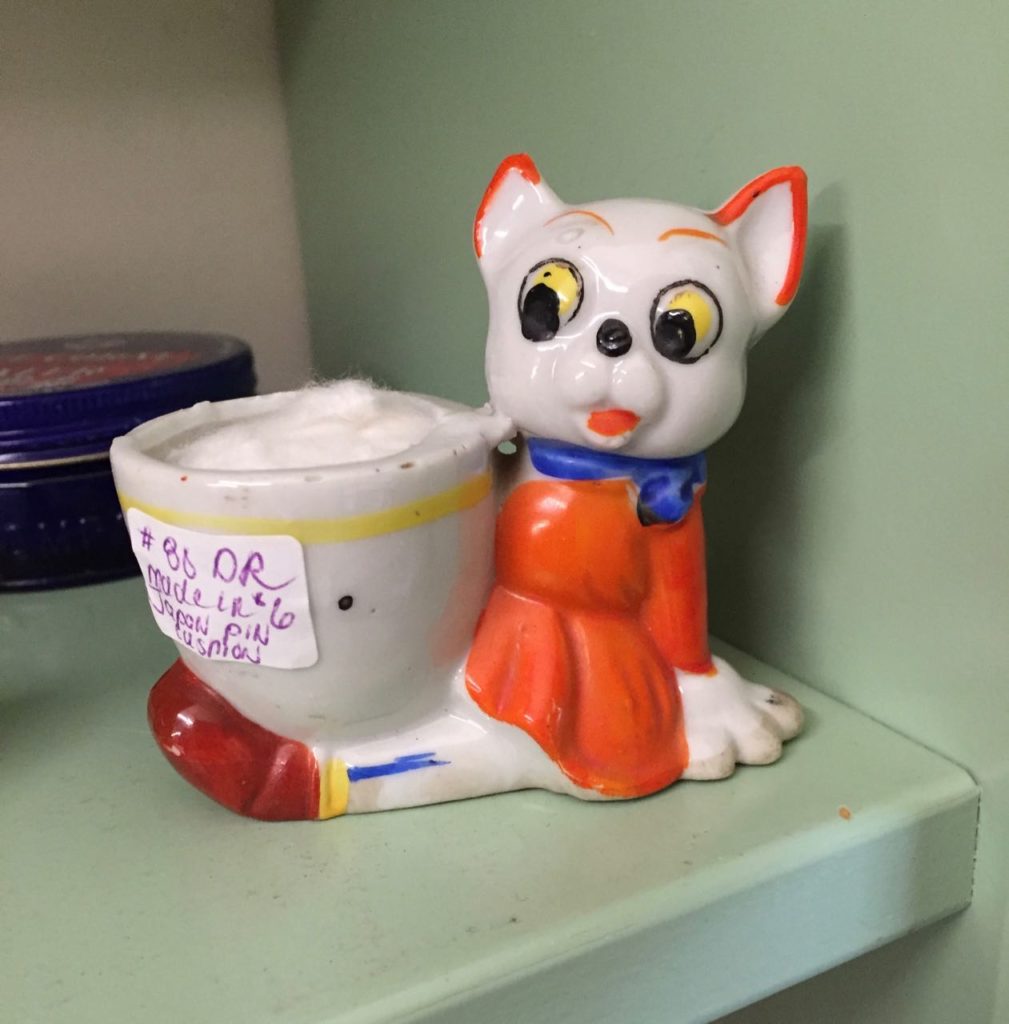 A pin cushion spotted on my search.
A pin cushion spotted on my search.
How about you—are you a feed sack fan? Tell us about how you find and collect them, and whether you’re brave enough to use them to make quilts.

Comments